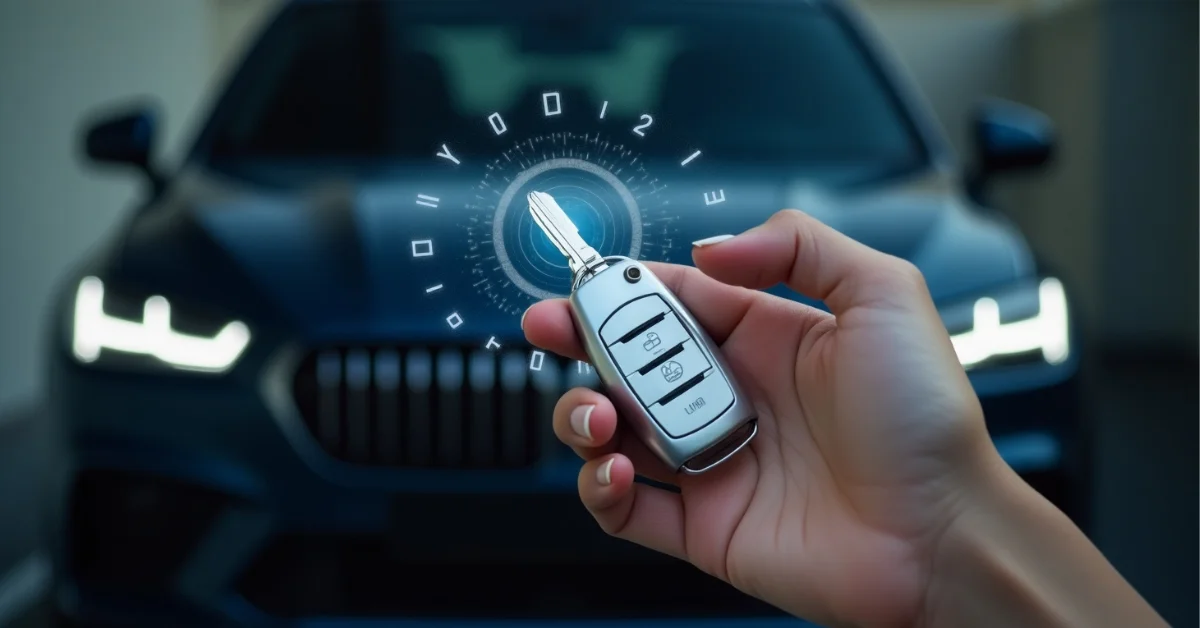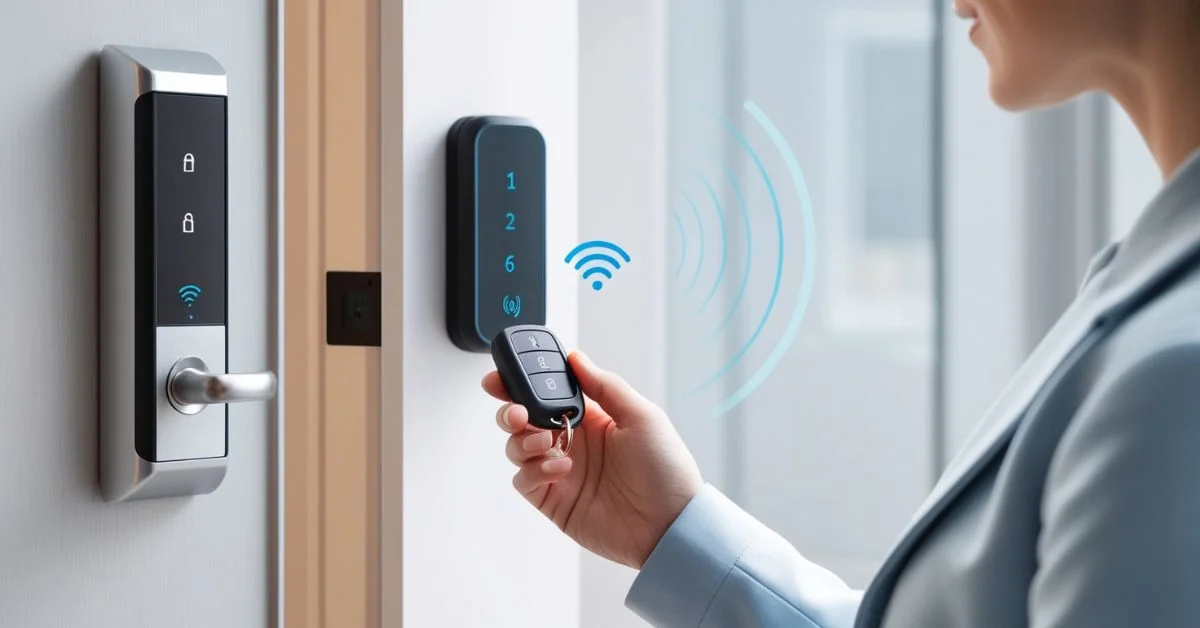A key fob is a compact, user-friendly device designed to grant access to vehicles, buildings, or restricted areas without the need for a conventional key. It works wirelessly, making it easier and faster to lock or unlock doors, start engines, or even open gates.
Brief History
Key fobs first appeared in the 1980s, using infrared signals mainly in luxury cars. In the 1990s, radio frequency technology made them common in everyday vehicles with better range. The 2000s introduced smart fobs allowing keyless entry and engine start. By the 2010s, smartphone apps began to replace some key fob functions. In the 2020s and continuing into 2025, digital keys using NFC and ultra-wideband technology have become more advanced, turning phones into virtual fobs, though traditional key fobs remain popular for convenience.
How Does a Key Fob Work?
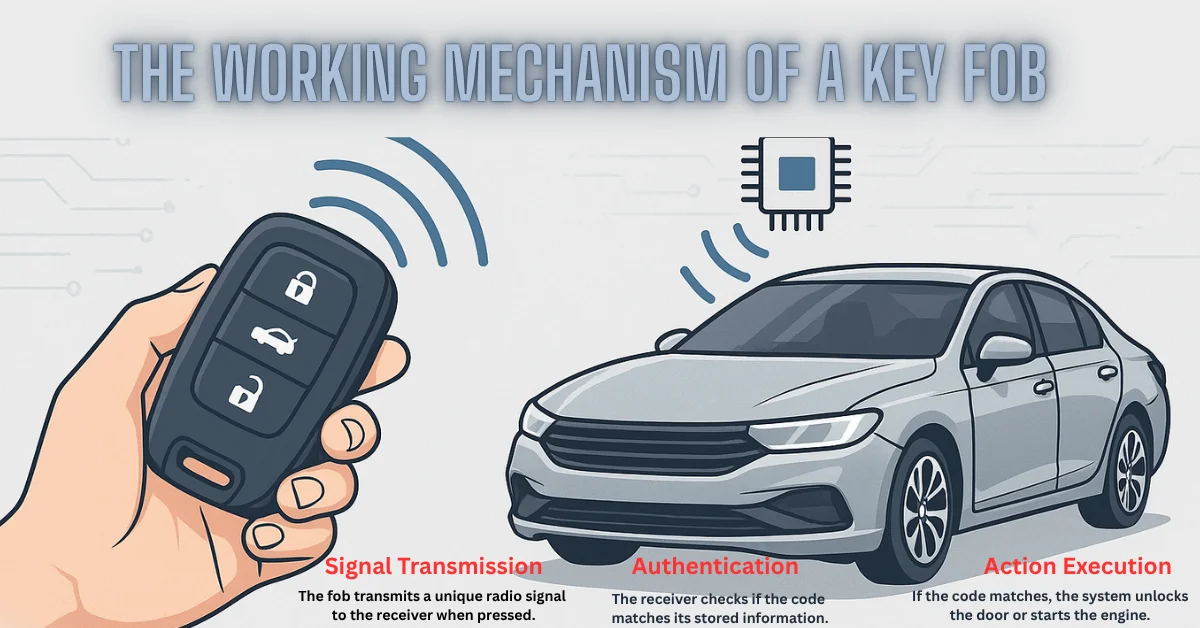
Key fobs use radio frequency identification (RFID) technology to communicate with a receiver in your car or building. Here’s how it works:
- Signal Transmission: The fob uses radio waves to transmit a distinct coded signal to the receiver when a button is pressed.
- Authentication: The receiver checks if the code matches its stored information.
- Action Execution: If the code matches, the system performs the desired action, like unlocking a door or starting an engine.
Modern key fobs often use rolling codes, which change each time the fob is used, enhancing security by preventing code duplication.
Common Uses of Key Fobs
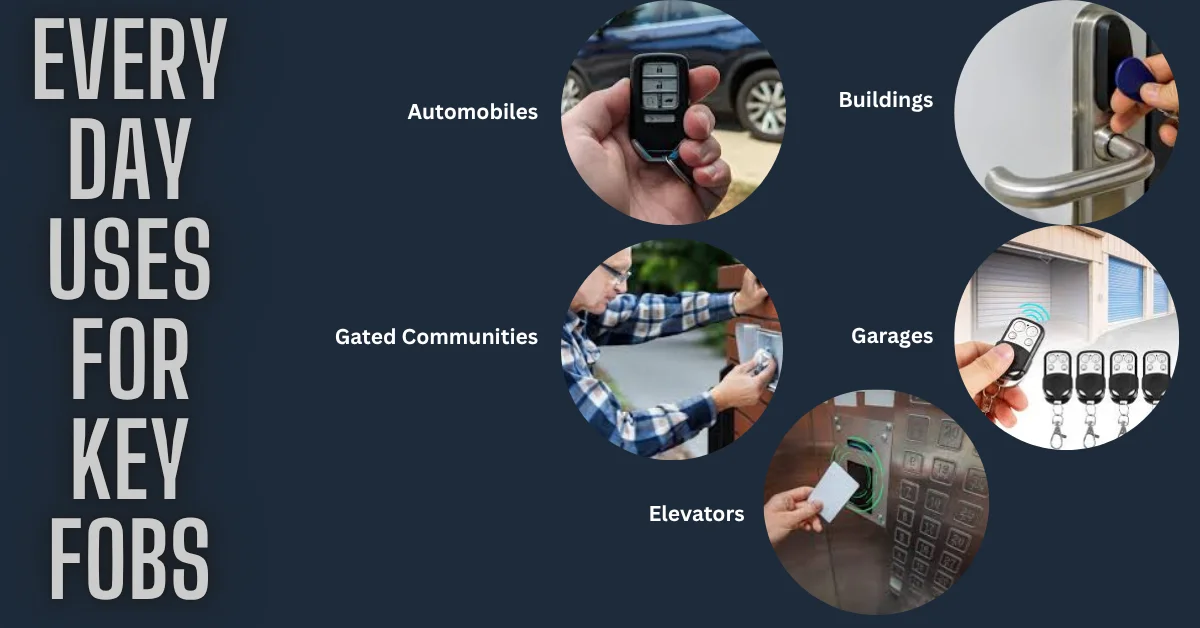
Key fobs are versatile and used in various applications:
- Automobiles: Locking/unlocking doors, starting the engine, opening the trunk, and activating alarms.
- Buildings: Granting access to offices, apartments, or restricted areas.
- Gated Communities: Controlling entry through gates or barriers.
- Garages: Opening and closing garage doors.
- Elevators: Accessing specific floors in secure buildings.
Types of Key Fobs
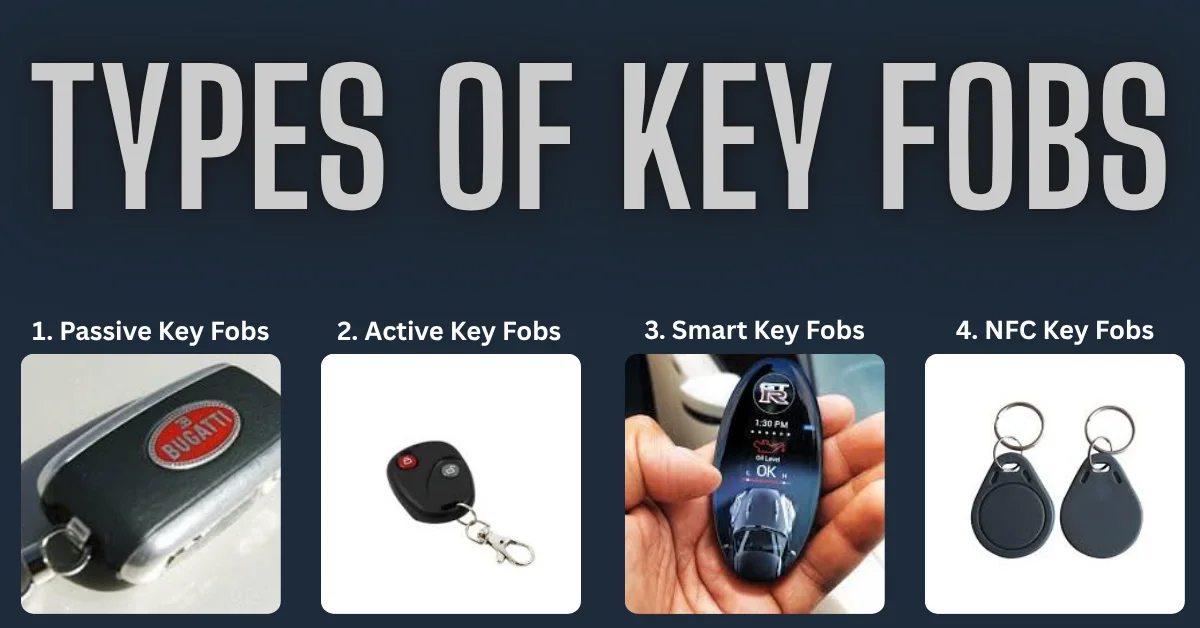
Different key fobs serve various purposes:
- Passive Key Fobs: Automatically unlock doors when you’re nearby.
- Active Key Fobs: Require you to press a button to perform actions.
- Smart Key Fobs: Offer advanced features like remote start, climate control, and personalized settings.
- NFC Key Fobs: Use near-field communication for short-range access, often used in smartphones.
Advantages of Using Key Fobs
Key fobs offer several benefits:
- Convenience: Quickly access your car or building without fumbling for keys.
- Enhanced Security: Rolling codes and encryption make it harder for unauthorized access.
- Customization: Program fobs for specific users or access levels.
- Easy Deactivation: Lost or stolen fobs can be deactivated without changing locks.
- Reduced Wear: Less physical contact means less wear on locks and keys.
Potential Risks and How to Mitigate Them
Despite their convenience, key fobs have many drawbacks:
- Relay Attacks: Thieves can amplify your fob’s signal to unlock your car remotely.
- Signal Jamming: Criminals can block your fob’s signal, preventing you from locking your car.
- Cloning: Hackers may attempt to clone your fob’s signal.
Mitigation Tips:
- Use a Faraday Pouch: Blocks signals when your fob is not in use.
- Disable Keyless Entry: If your car allows, turn off passive entry features.
- Keep Fobs Away from Doors/Windows: Reduces the chance of signal interception.
- Use Physical Locks: Steering wheel locks add an extra layer of security.
Maintaining Your Key Fob
To ensure your key fob works properly:
- Replace Batteries: Most fobs use coin-cell batteries that need periodic replacement.
- Keep It Clean: Dirt can obstruct the transmission of signals and buttons.
- Avoid Water Damage: Keep your fob dry to prevent internal damage.
- Have a Spare: In case one fob is lost or damaged, a backup ensures continued access.
Troubleshooting Common Issues
If your key fob isn’t working:
- Check the Battery: Replace if necessary.
- Reprogram the Fob: Some issues require reprogramming, which may need professional assistance.
- Inspect for Damage: Physical damage can impair functionality.
- Consult the Manual: Your vehicle’s manual may offer specific troubleshooting steps.
Key Fobs vs Digital Keys
While traditional key fobs are still common, digital keys are gaining popularity. A digital key turns your smartphone into a virtual fob using technologies like Bluetooth, NFC, or UWB. These keys offer extra features, such as:
- Remote lock/unlock
- Car location tracking
- Temporary access sharing with others
- Engine start via app
However, digital keys depend on your phone’s battery and signal. If your phone dies or the app crashes, you might lose access. This is why many carmakers still provide physical fobs as a backup even when offering digital keys.
How to Protect Your Key Fob from Theft?
To keep your car and key fob safe, consider the following precautions:
- Use a Faraday pouch or box to block radio signals when the fob isn’t in use.
- Store your fob away from doors and windows so signals aren’t easily intercepted.
- Disable passive entry in your car settings if you don’t use it.
- Regularly updating your vehicle’s software ensures you receive the latest security patches provided by the manufacturer.
- Avoid leaving your fob in your car even when parked in your garage.
By taking these small steps, you can keep your key fob more secure and reduce the risk of car theft.
Key Fobs and Vehicle Security
Modern key fobs are designed with security in mind. Most car fobs today use encrypted rolling codes, meaning the signal changes each time you press a button. This makes it difficult for hackers to copy the signal and gain access to your vehicle. Some advanced systems even use biometric data or PIN codes for added protection. Car manufacturers constantly update key fob systems to fight against high-tech car theft methods like relay attacks, where thieves amplify your fob’s signal to unlock your car remotely. While no system is 100% theft-proof, a properly managed key fob greatly reduces the chances of unauthorized access.
Conclusion
Key fobs have revolutionized how we secure and access our vehicles and buildings. From simple remote controls in the 1980s to advanced digital keys today, they offer convenience, security, and customization. While new technologies like smartphone integration are emerging, traditional key fobs remain reliable and widely used. By understanding how key fobs work and following safety tips, you can protect your vehicle from theft and ensure your fob functions properly for years to come.
